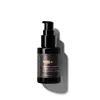What's inside
What's inside
 Key Ingredients
Key Ingredients

 Benefits
Benefits

 Concerns
Concerns

 Ingredients Side-by-side
Ingredients Side-by-side

Hordeum Vulgare Leaf Juice
EmollientPropanediol
SolventWater
Skin ConditioningSilybum Marianum Ethyl Ester
Skin ConditioningGalactoarabinan
Glycerin
HumectantSalix Alba Bark Extract
AstringentCetearyl Olivate
Simmondsia Chinensis Seed Oil
EmollientSqualane
EmollientSorbitan Olivate
EmulsifyingButter Glycerides
Skin ConditioningIsopropyl Shea Butterate
EmollientLactobacillus Ferment
Skin ConditioningLeuconostoc Ferment Filtrate
AntimicrobialSolanum Lycopersicum Fruit Extract
AntioxidantLactic Acid
BufferingVaccinium Myrtillus Fruit/Leaf Extract
AstringentSaccharum Officinarum Extract
MoisturisingCitrus Aurantium Dulcis Fruit Extract
MaskingCitrus Limon Fruit Extract
MaskingAcer Saccharum Extract
Skin ConditioningCitric Acid
BufferingTerminalia Ferdinandiana Fruit Extract
AntioxidantLithospermum Erythrorhizon Root Extract
Skin ConditioningHippophae Rhamnoides Oil
EmollientPlukenetia Volubilis Seed Oil
EmollientSaccharide Isomerate
HumectantTasmannia Lanceolata Fruit/Leaf Extract
AntioxidantArnica Montana Extract
Skin ConditioningBorago Officinalis Leaf Extract
Skin ConditioningCalendula Officinalis Flower Extract
MaskingMedicago Sativa Extract
TonicSpiraea Ulmaria Extract
AstringentSambucus Nigra Fruit Extract
AstringentOlea Europaea Fruit Oil
MaskingTocopherol
AntioxidantCaprylic/Capric Triglyceride
MaskingCetyl Palmitate
EmollientSorbitan Palmitate
EmulsifyingSclerotium Gum
Emulsion StabilisingAroma
Sodium Phytate
Sodium Citrate
BufferingMica
Cosmetic ColorantAlcohol
AntimicrobialCI 77891
Cosmetic ColorantCI 77491
Cosmetic ColorantCitral
PerfumingLimonene
PerfumingLinalool
PerfumingGeraniol
PerfumingBenzyl Benzoate
AntimicrobialHordeum Vulgare Leaf Juice, Propanediol, Water, Silybum Marianum Ethyl Ester, Galactoarabinan, Glycerin, Salix Alba Bark Extract, Cetearyl Olivate, Simmondsia Chinensis Seed Oil, Squalane, Sorbitan Olivate, Butter Glycerides, Isopropyl Shea Butterate, Lactobacillus Ferment, Leuconostoc Ferment Filtrate, Solanum Lycopersicum Fruit Extract, Lactic Acid, Vaccinium Myrtillus Fruit/Leaf Extract, Saccharum Officinarum Extract, Citrus Aurantium Dulcis Fruit Extract, Citrus Limon Fruit Extract, Acer Saccharum Extract, Citric Acid, Terminalia Ferdinandiana Fruit Extract, Lithospermum Erythrorhizon Root Extract, Hippophae Rhamnoides Oil, Plukenetia Volubilis Seed Oil, Saccharide Isomerate, Tasmannia Lanceolata Fruit/Leaf Extract, Arnica Montana Extract, Borago Officinalis Leaf Extract, Calendula Officinalis Flower Extract, Medicago Sativa Extract, Spiraea Ulmaria Extract, Sambucus Nigra Fruit Extract, Olea Europaea Fruit Oil, Tocopherol, Caprylic/Capric Triglyceride, Cetyl Palmitate, Sorbitan Palmitate, Sclerotium Gum, Aroma, Sodium Phytate, Sodium Citrate, Mica, Alcohol, CI 77891, CI 77491, Citral, Limonene, Linalool, Geraniol, Benzyl Benzoate
Ingredients Explained
These ingredients are found in both products.
Ingredients higher up in an ingredient list are typically present in a larger amount.
Glycerin is already naturally found in your skin. It helps moisturize and protect your skin.
A study from 2016 found glycerin to be more effective as a humectant than AHAs and hyaluronic acid.
As a humectant, it helps the skin stay hydrated by pulling moisture to your skin. The low molecular weight of glycerin allows it to pull moisture into the deeper layers of your skin.
Hydrated skin improves your skin barrier; Your skin barrier helps protect against irritants and bacteria.
Glycerin has also been found to have antimicrobial and antiviral properties. Due to these properties, glycerin is often used in wound and burn treatments.
In cosmetics, glycerin is usually derived from plants such as soybean or palm. However, it can also be sourced from animals, such as tallow or animal fat.
This ingredient is organic, colorless, odorless, and non-toxic.
Glycerin is the name for this ingredient in American English. British English uses Glycerol/Glycerine.
Learn more about GlycerinLactic Acid is another well-loved alpha hydroxy acid (AHA). It is gentler than glycolic acid but still highly effective.
Its main role is to exfoliate the surface of the skin by loosening the “glue” that holds dead skin cells together. Shedding those old cells leads to smoother, softer, and more even-toned skin.
Because lactic acid molecules are larger than glycolic acid, they don’t penetrate as deeply. This means they’re less likely to sting or irritate, making it a great choice for beginners or those with sensitive skin.
Like glycolic acid, it can:
Lactic acid also acts as a humectant (like hyaluronic acid). It can draw water into the skin to improve hydration and also plays a role in the skin's natural moisturizing factor (NMF) in the form of sodium lactate.
Studies show it can boost ceramide production to strengthen the skin barrier and even help balance the skin’s microbiome.
To get results, choose products with a pH between 3-4.
Lower strengths (5-12%) focus on surface exfoliation; higher strengths (12% and up) can reach deeper in the dermis (deeper, supportive layer) to improve skin texture and firmness over time.
Though it was originally derived from milk, most modern lactic acid used in skincare is vegan. It is made through non-dairy fermentation to create a bio-identical and stable form suitable for all formulations.
When lactic acid shows up near the end of an ingredient list, it usually means the brand added just a tiny amount to adjust the product’s pH.
Legend has it that Cleopatra used to bathe in sour milk to help reduce wrinkles.
Lactic acid is truly a gentle multitasker: it exfoliates, hydrates, strengthens, and brightens. It's a great ingredient for giving your skin a smooth, glowing, and healthy look without the harshness of stronger acids.
Read more about some other popular AHA's here:
Learn more about Lactic AcidPropanediol is an all-star ingredient. It softens, hydrates, and smooths the skin.
It’s often used to:
Propanediol is not likely to cause sensitivity and considered safe to use. It is derived from corn or petroleum with a clear color and no scent.
Learn more about PropanediolWater. It's the most common cosmetic ingredient of all. You'll usually see it at the top of ingredient lists, meaning that it makes up the largest part of the product.
So why is it so popular? Water most often acts as a solvent - this means that it helps dissolve other ingredients into the formulation.
You'll also recognize water as that liquid we all need to stay alive. If you see this, drink a glass of water. Stay hydrated!
Learn more about Water